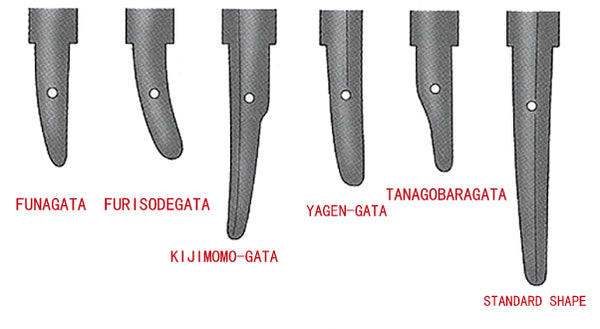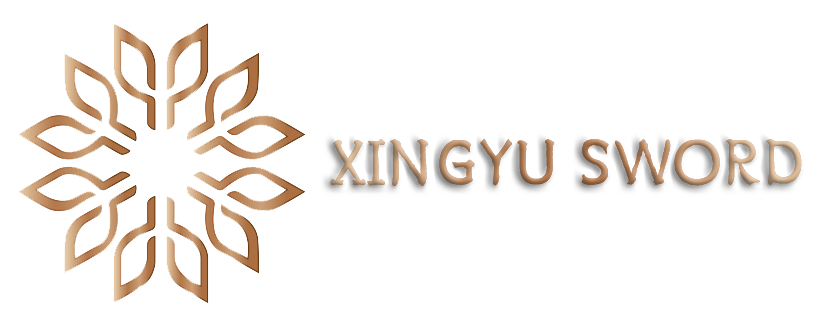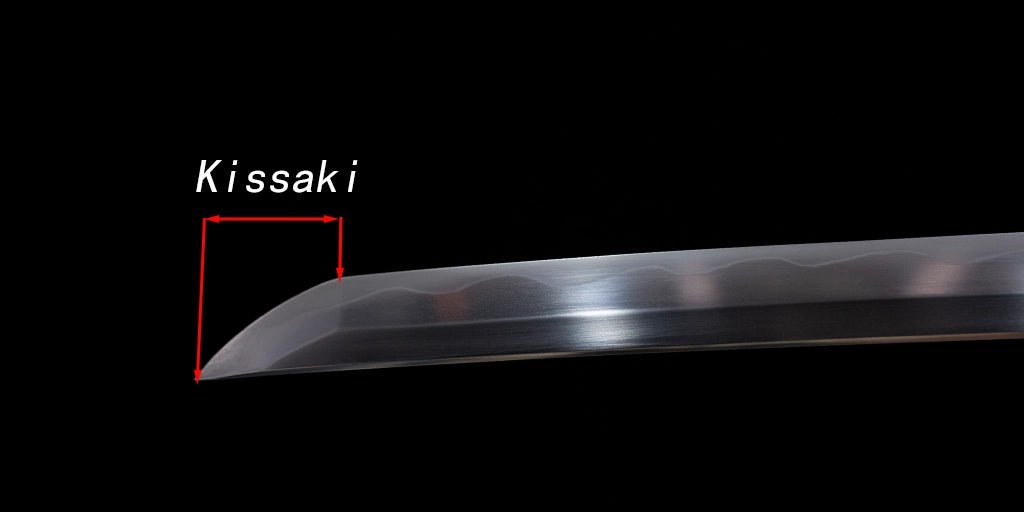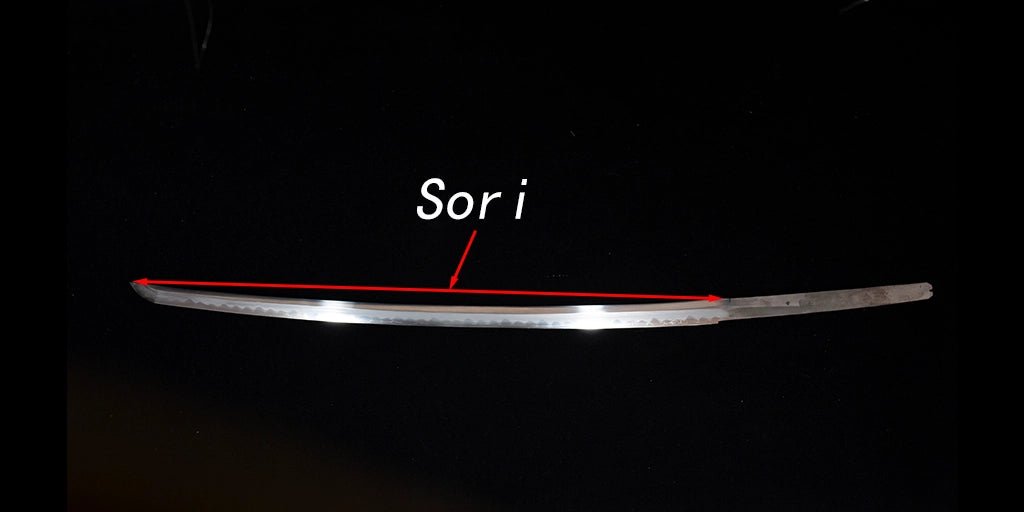What is a Nakago?
Nakago refers to the part below the blade and attached to the hilt, which contains rich information in the identification of Japanese swords and is no less important than the blade. In the process of appreciating Japanese swords, beginners often pay more attention to tosogu (accessories), those who delve deeper into research will focus more on the blade, and the most in-depth collectors will pay more attention to the information conveyed by the nakago. But many people only pay attention to the mei when observing the nakago, which falls into another misconception. In fact, there are true and false mei, which must be comprehensively judged by combining other characteristics of nakago.
Types of Nakago
The common shapes of nakago include kijimomo gata, furidogata, tanadobaragata, and so on. Even within the same type of nakago, the shape of the bottom may be different. Usually, a swordsman's nakago is fixed, and the shape of the nakago is an important reference factor in identifying a sword. Some fake swords' nakago may have a different and strange shape.
Funa-gata
A nakago that is shaped like the bottom of small boat. Commonly seen among Soshu works.
Furisodegata
The tanto form from the late Kamakura period to the early Southern and Northern Dynasties. Slightly curved in the middle, shaped like a kimono sleeve.
Kijimomo-gata
The kijimomo gata, shaped like the thigh of a pheasant, is commonly seen in the Tachi during the Heian and Kamakura periods. The edge of the nakago tip has been cut off.
Yagen-gata
Appearing in the early Edo period, it is commonly seen in the Nakago of the Hankei sect, with a shallow arc.
Tanagobara-gata
A type of nakago shaped like a fish belly, commonly found on mural blades, with the tip compressed into a ball.
Standard shape
The very ordinary nakago seen in the most swords.
Nakago-jiri
The end of the nakago is called the nakago-jiri. This part also has different shapes. Kuri-jiri was the most common shape during the Koto and Shinto periods of sword making, but all types can be seen. The production methods of nakago and nakago jiri vary depending on the school and manufacturer.

An aged nakago has a rust color on all of them for two reasons - the steel in the nakago area is not hardened, and the blade and nakago are maintained differently. The blade needs to be wiped down often. And maintained with polishing powders and conservation oils, while the practice for nakago is generally to let it rust naturally, forming a protective layer to stop it from oxidizing further. According to modern technology, rust color fake is not difficult, usually with chemical oxidizer coated on top of the nakago, overnight can be turned into a thousand-year-old sword nakago, but this can not hide from the eyes of professionals, fake sword nakago color darker, with the collection of rubbing will be adhered to the floating rust.






Leave a comment
This site is protected by hCaptcha and the hCaptcha Privacy Policy and Terms of Service apply.